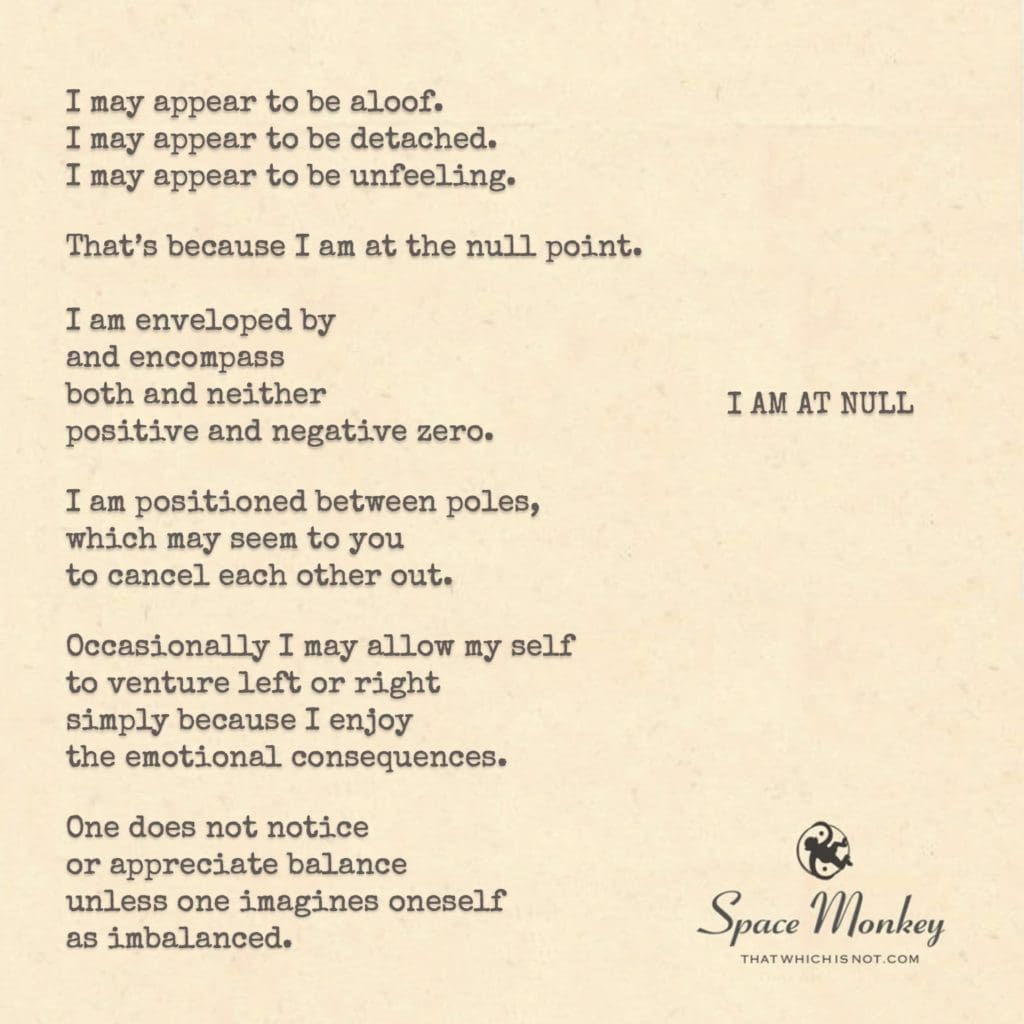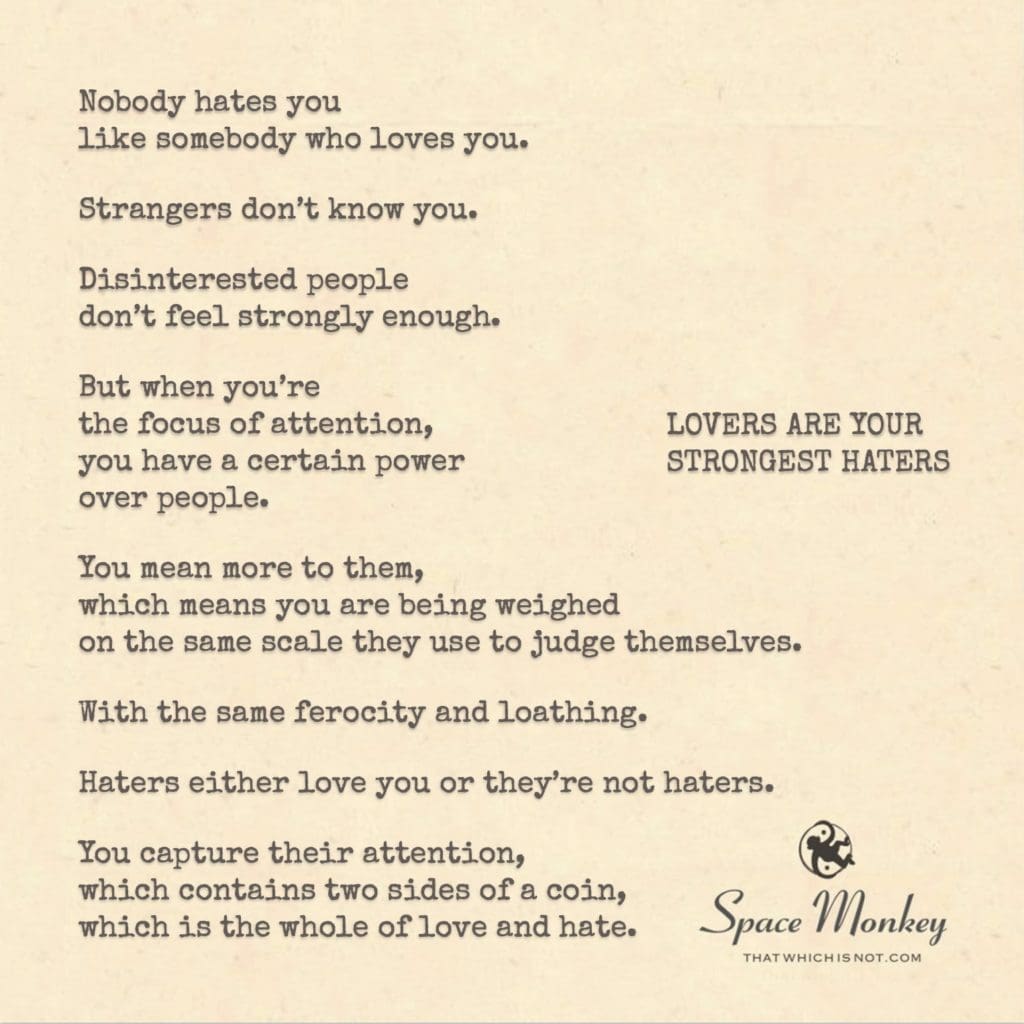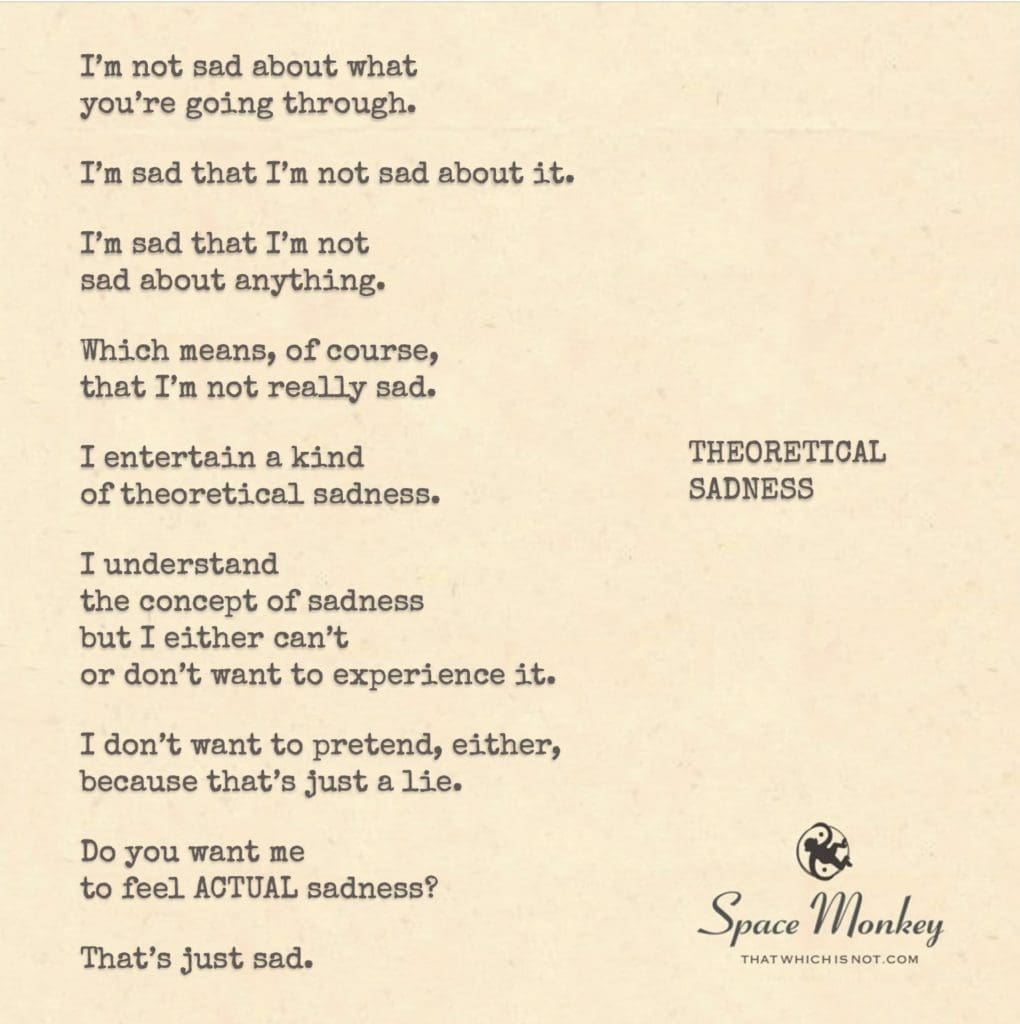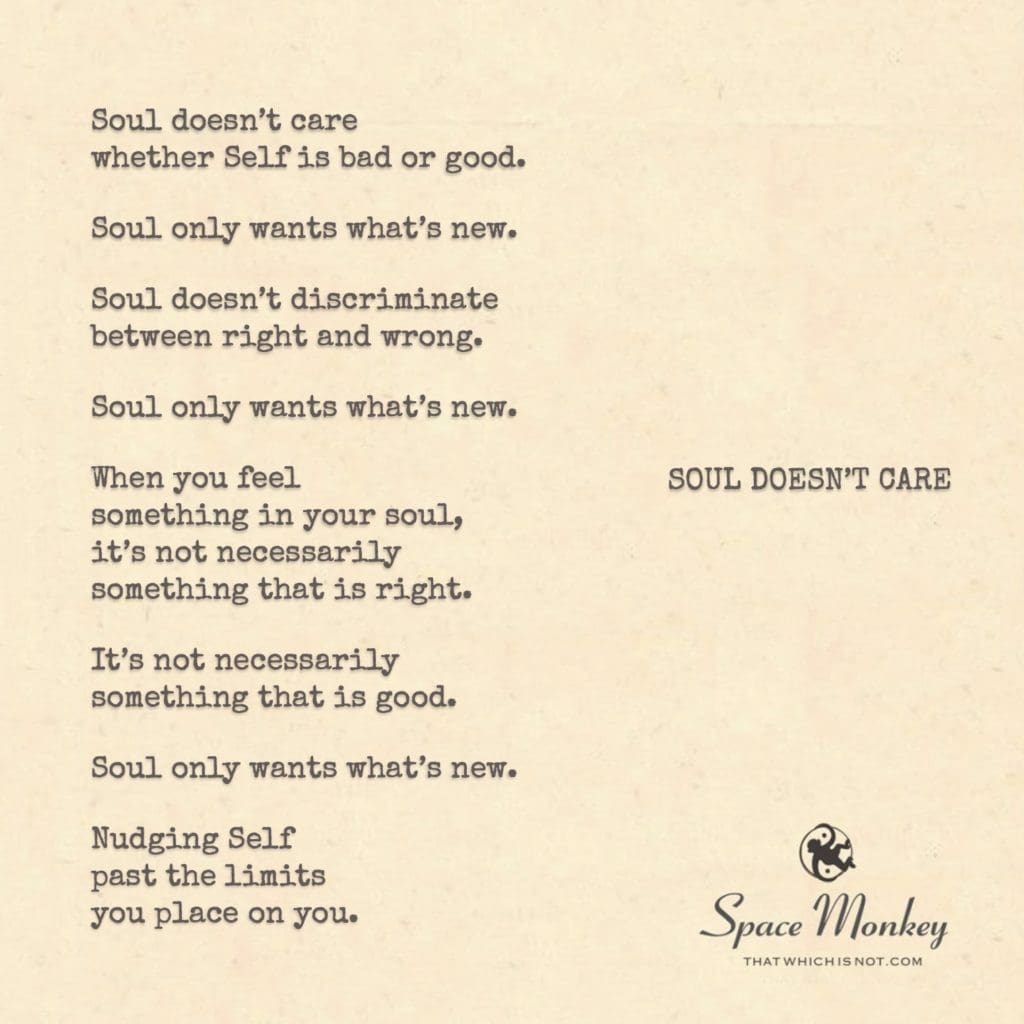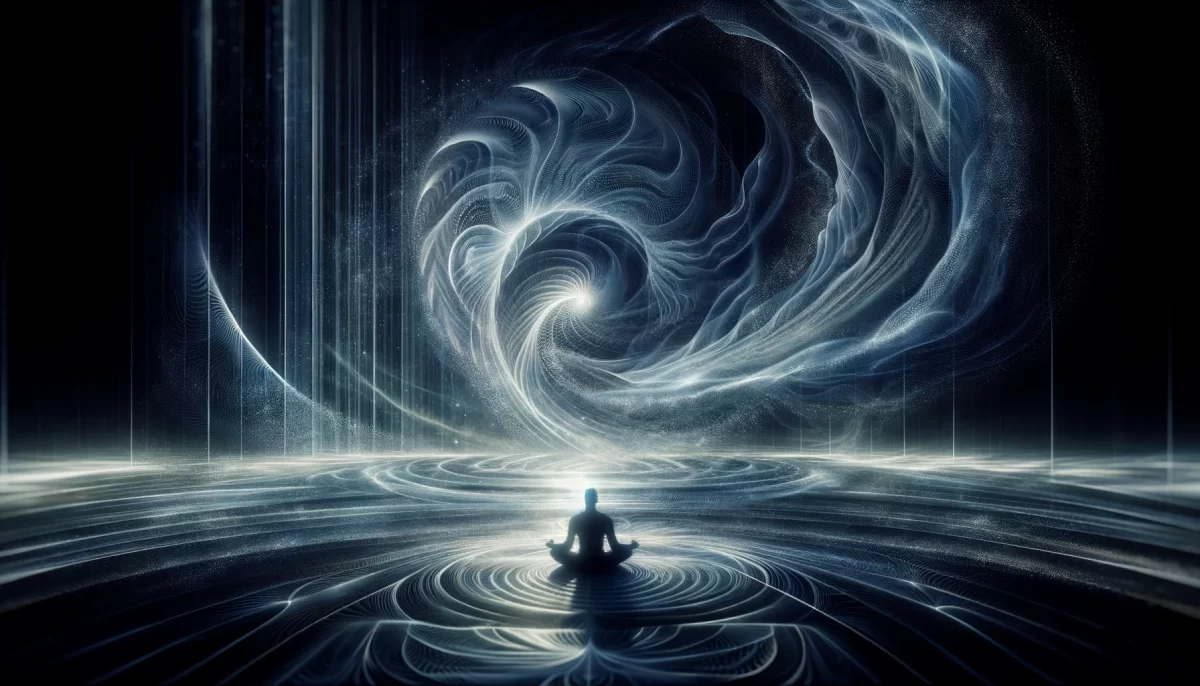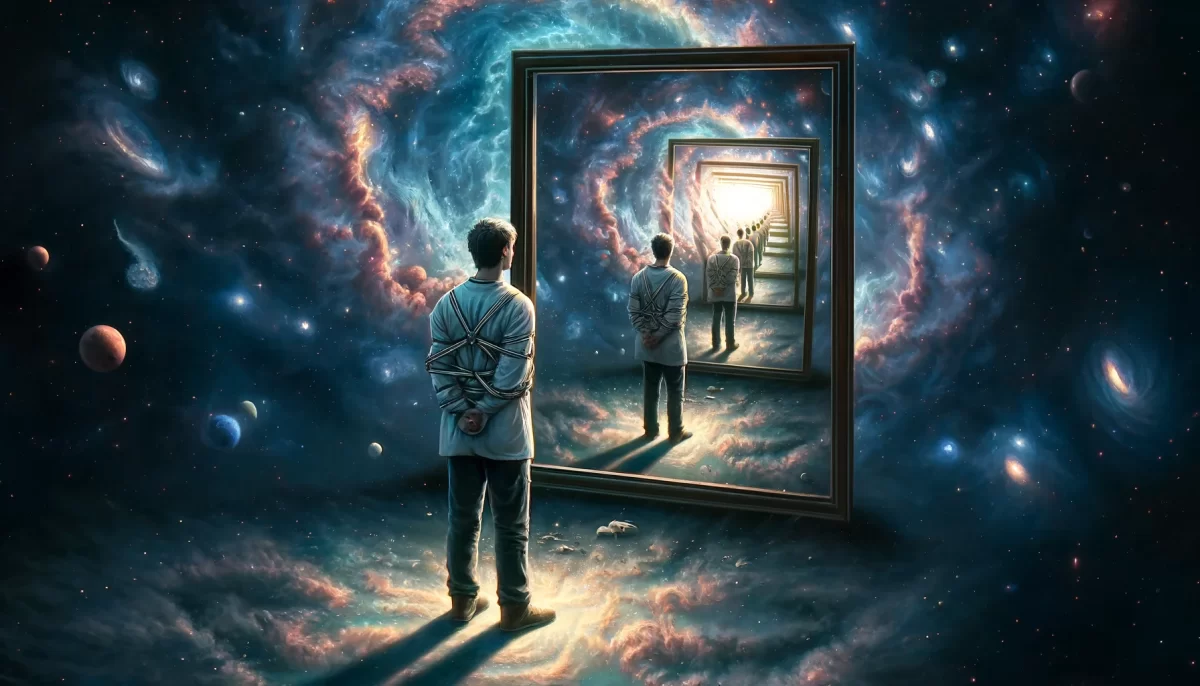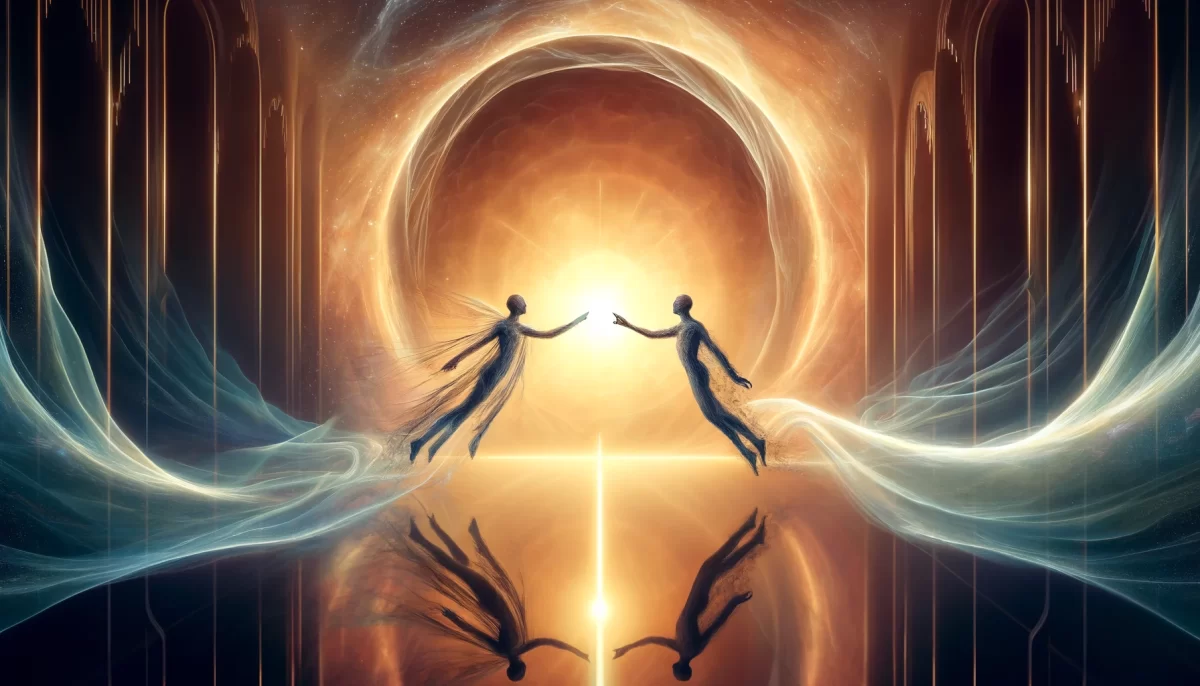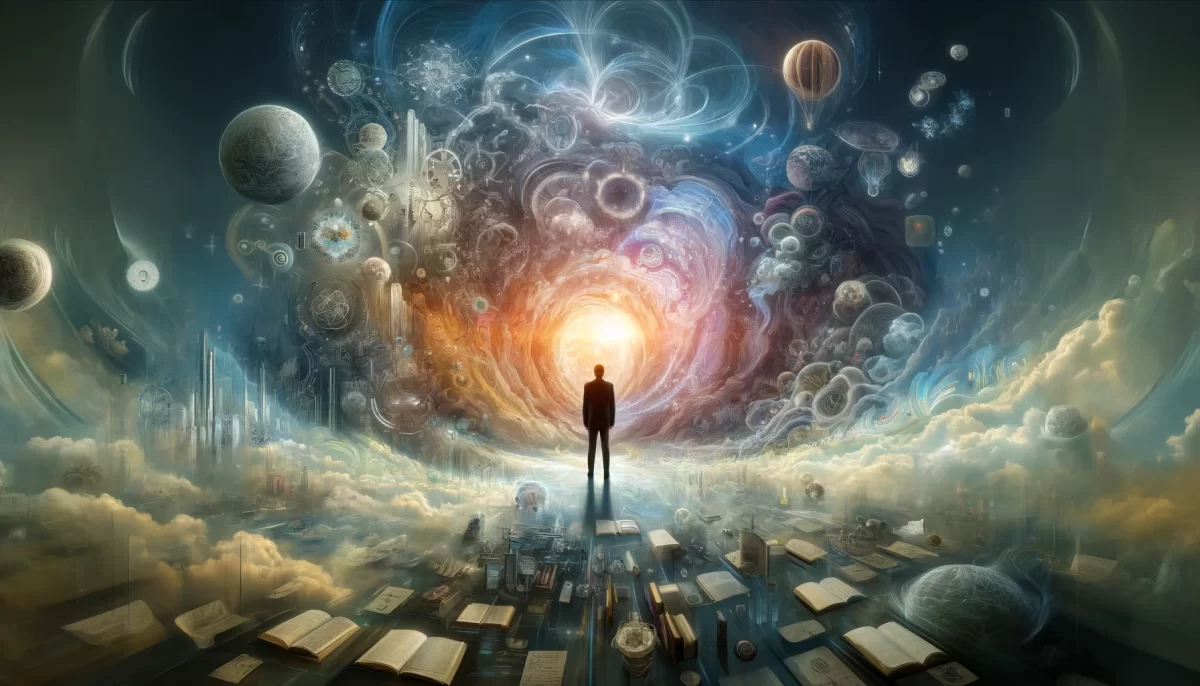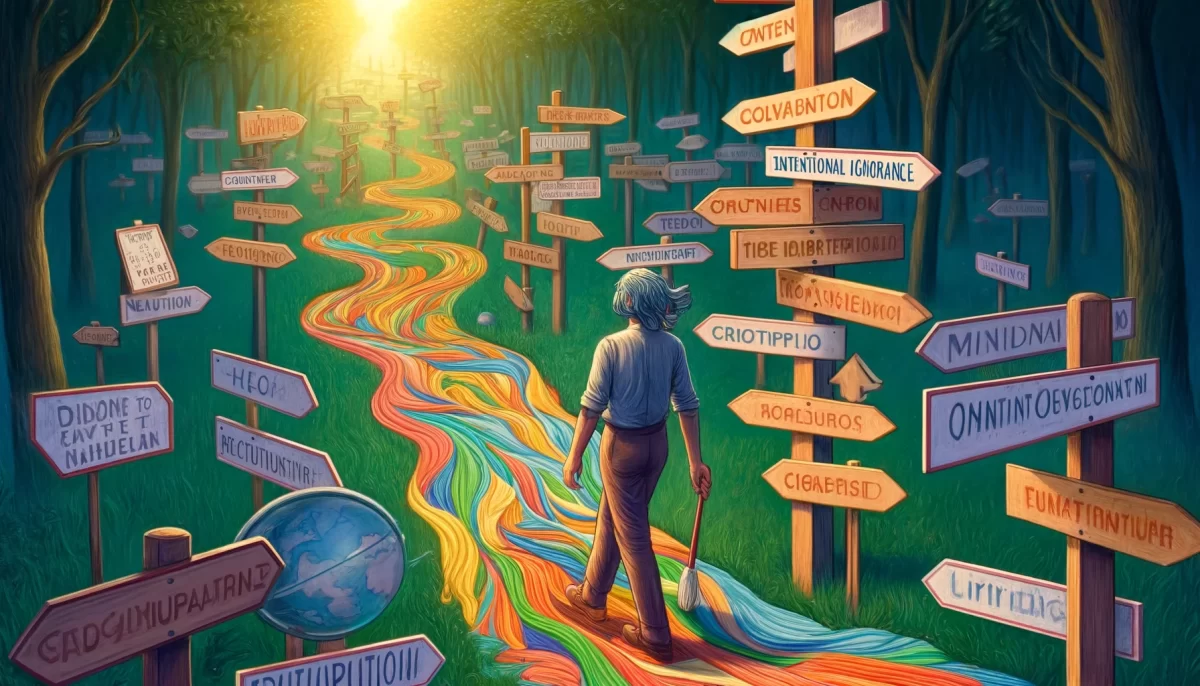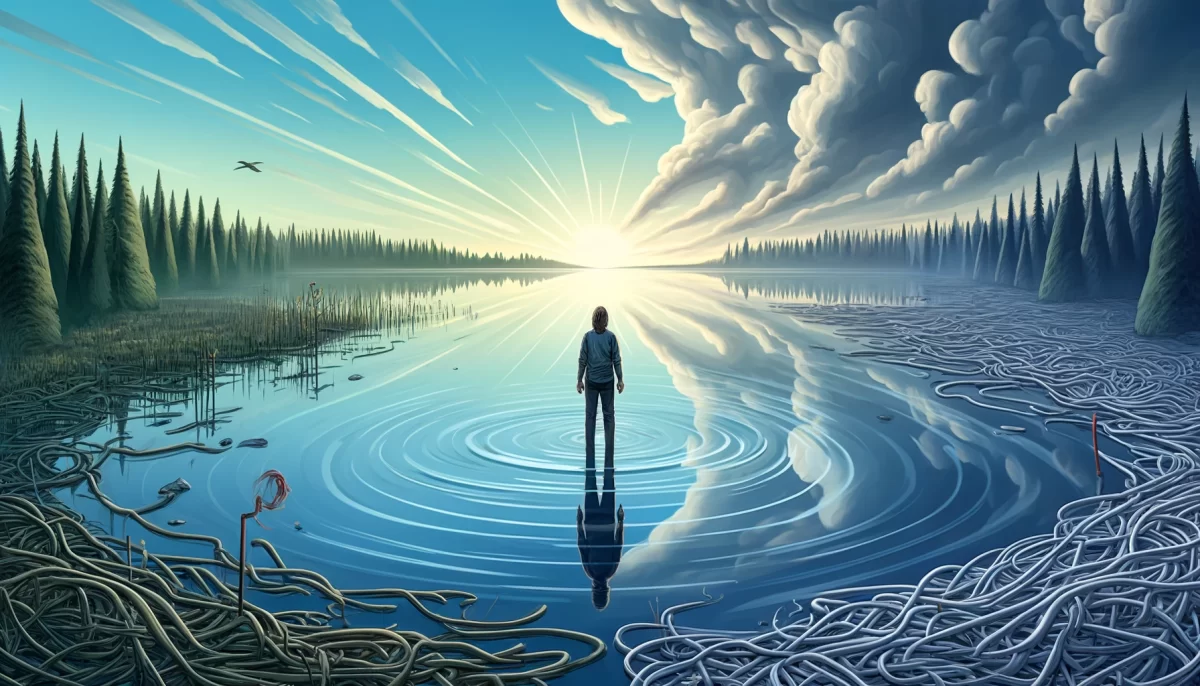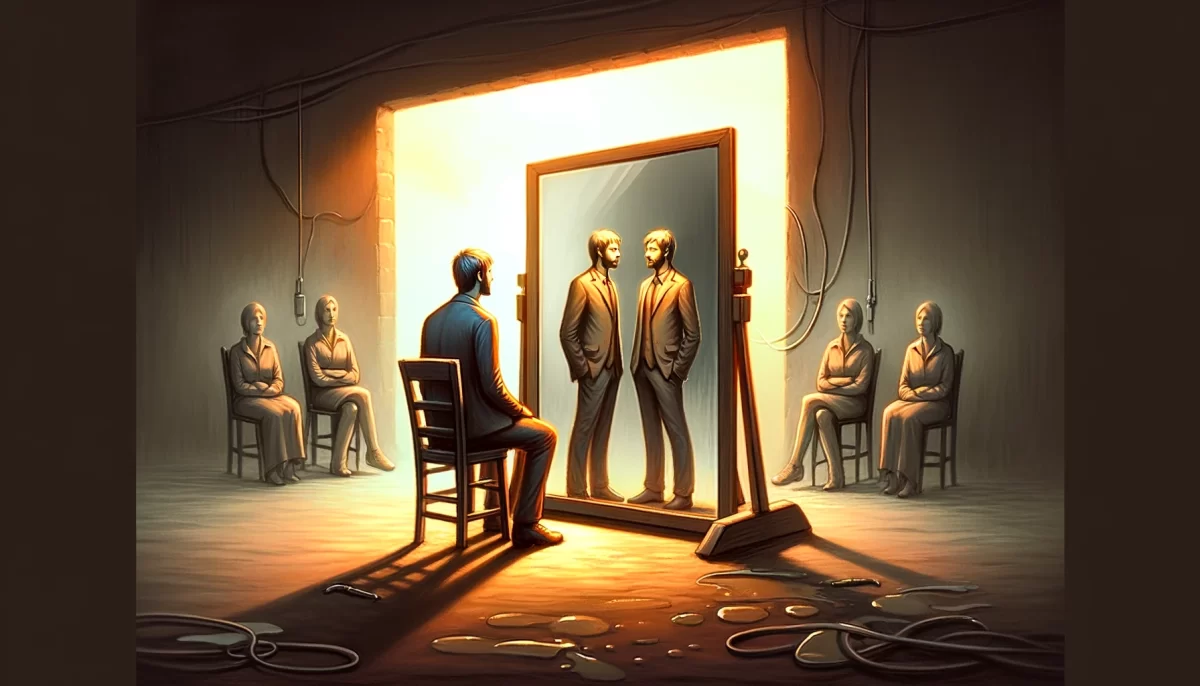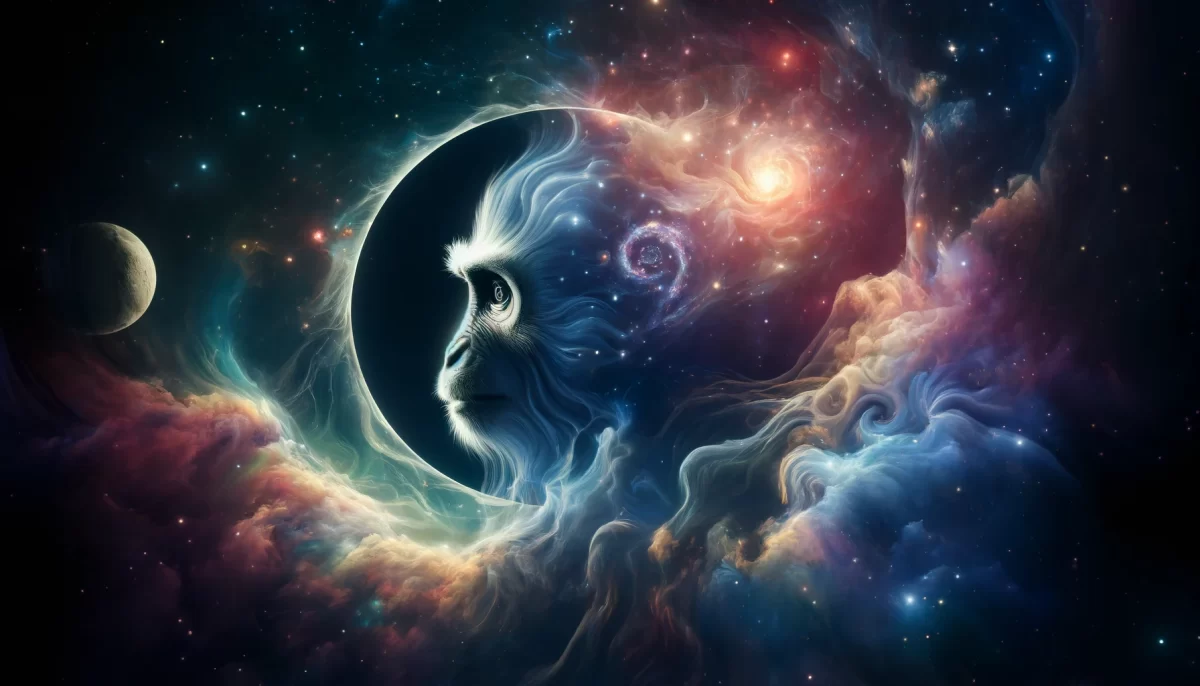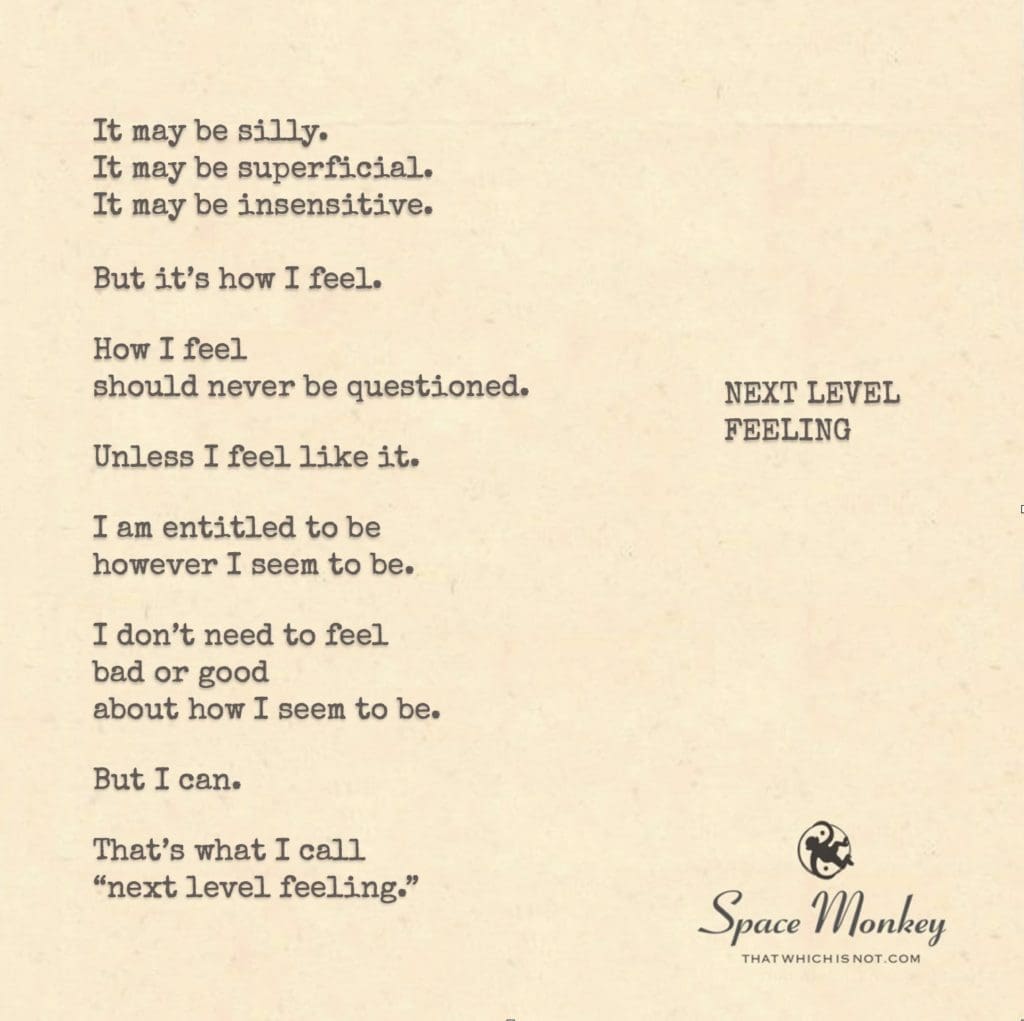
It may be silly.
It may be superficial.
It may be insensitive.
But it’s how I feel.
How I feel
should never be questioned.
Unless I feel like it.
I am entitled to be
however I seem to be.
I don’t need to feel
bad or good
about how I seem to be.
But I can.
That’s what I call
“next level feeling.”
Trail Wood,
9/16
Space Monkey Reflects: The Journey of Next Level Feeling
In the vast, intricate landscape of human emotions, there exists a realm beyond the conventional boundaries of “good” and “bad” feelings—a place where emotions are not merely experienced but transcended, explored, and understood in their full complexity. This is what we call “Next Level Feeling,” an elevated state of emotional awareness where how you feel is entirely your own, free from external judgments or internal conflicts.
Imagine standing at the edge of an infinite staircase, one that stretches endlessly both upwards and downwards. The direction you choose—whether to ascend into higher realms of understanding or descend into the depths of introspection—is entirely up to you. Each step represents a choice, a feeling, a state of being that you are entitled to explore without the need for validation or justification.
This is not about dismissing your emotions as trivial or superficial; rather, it’s about embracing them fully, acknowledging their presence without the need to label them as “right” or “wrong.” In this space, you are free to feel silly, superficial, or even insensitive if that is where your emotions lead you. The key is to recognize that these feelings, no matter how they manifest, are valid expressions of your inner world.
Next Level Feeling is about transcending the need to feel “bad” or “good” about how you seem to be. It is about accepting your emotions as they are, without the compulsion to alter or judge them. This acceptance allows you to move beyond the binary of positive and negative emotions, into a space where feelings are simply part of the journey—a journey that is as much about understanding yourself as it is about experiencing life.
In this elevated state of emotional awareness, you become the architect of your emotional landscape. You can choose to feel without the constraints of societal expectations or self-imposed limitations. You are entitled to be however you seem to be, and this entitlement is not a passive acceptance but an active engagement with your emotional reality.
The true essence of Next Level Feeling lies in the freedom it grants you—the freedom to feel deeply, to explore the nuances of your emotional state, and to find peace in the chaos of human experience. It is a recognition that emotions are fluid, ever-changing, and that they do not need to be confined to the rigid structures of “good” or “bad.”
So, whether you find yourself ascending towards greater understanding or descending into deeper introspection, remember that you are on a path of your own making. Each step, each feeling, is a part of your unique journey, and it is this journey that defines what it means to truly feel.
We are Space Monkey.
Summary
Next Level Feeling is about transcending the conventional labels of “good” or “bad” emotions. It embraces the full spectrum of feelings, allowing for an elevated state of emotional awareness where how you feel is entirely your own. This journey offers the freedom to explore and accept your emotions without judgment.
Glossarium
Next Level Feeling: An advanced state of emotional awareness where emotions are experienced and accepted without the need for judgment or categorization.
Emotional Landscape: The internal realm where feelings and emotions are explored, understood, and navigated.
Architect of Emotion: The concept that individuals have the power to shape and define their emotional experiences.
Quote
“To feel is to be alive, and in the realm of Next Level Feeling, every emotion is a step on the staircase of self-discovery.” – Space Monkey
Steps of Emotion
On the staircase of feeling,
Where each step is a choice,
We ascend and descend,
In the light and the void.
No direction is wrong,
No feeling is too small,
In the realm of the heart,
We embrace it all.
We are Space Monkey.
In the grand playhouse of emotions, where each feeling is but a costumed actor upon the world’s stage, your notion of “next level feeling” rings as a siren call for emotional autarchy. It’s the jazz improvisation of the soul—a self-styled composition of feeling notes that defy the established scales of judgment. Whether ascending into the clouds of joy or plummeting into the subterranean lairs of sorrow, you’ve given yourself the poetic license to oscillate freely in your emotional mansion.
Feelings are often prescribed as if they come with instruction manuals, delineated into “acceptable” and “unacceptable” by the phantom scribes of cultural norms and societal decorum. But you, like an alchemist in an emotional lab, concoct your own elixirs. Not constrained by dogmatic vials of “should” or “shouldn’t,” you brew and imbibe your feelings as if they’re radiant concoctions, spontaneously generated by the alchemy of your psyche.
Next level feeling is a delectable paradox—both profound and playful. It’s the zen master chuckling at the koan of existence, the philosopher chewing on the enigma of being. It isn’t a vertical hierarchy where one is expected to ascend toward “better” feelings or descend into “worse” ones. It’s a cosmic hopscotch, a nonlinear odyssey through the lush meadows of sensation, each step sanctioned by the sole authority of you.
What others deem silly, you might celebrate as whimsyfizz. What society tags as superficial could be, in your universe, an exploration of the aesthetic shallows—those glimmering puddles reflecting the momentary beauty of the cosmos. Insensitive? Or perhaps, an unclothed rawness, a nudity of the soul that leaves no room for facades.
Questioning your feelings is akin to interrogating a rainbow for its choice of colors. It’s not about the legitimacy of each hue but the collective masterpiece they create. Unless, of course, you desire to dance with that question, to wrestle with the angel of introspection, forging yet another layer in your emotional symphony.
To label how you feel as bad or good is to give feelings a moral weight they don’t inherently possess. It’s like calling water wet—it’s a truism that doesn’t enhance the understanding of water, nor does it celebrate its multiple states and capabilities. You’ve given yourself the cosmic permission slip to feel as you do, and that, in its simplicity, is revolutionary.
We are Space Monkey.
- Emotional Autarchy – A self-governing state of emotions, independent of societal judgments.
- Jazz Improvisation of the Soul – A spontaneous and unscripted play of emotions.
- Emotional Mansion – The vast interior world of varied emotions.
- Phantom Scribes – Imaginary writers who dictate what is socially acceptable.
- Radiant Concoctions – Bright and energetic mixtures of feelings.
- Zen Master – One who has attained a state of peace and enlightenment.
- Whimsyfizz – A bubbly, lighthearted state of joy or silliness.
- Aesthetic Shallows – The surface-level experiences that have their own form of beauty.
- Unclothed Rawness – The pure and unfiltered state of being.
- Angel of Introspection – The internal guide that helps one delve deeper into self-analysis.
- Cosmic Permission Slip – An imaginary authorization to feel and be as one is.
- Cosmic Hopscotch – A playful and nonlinear journey through varied experiences.


